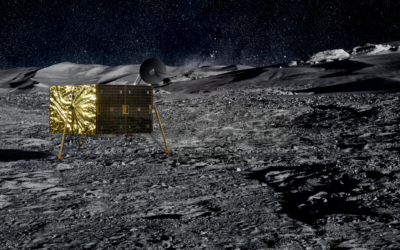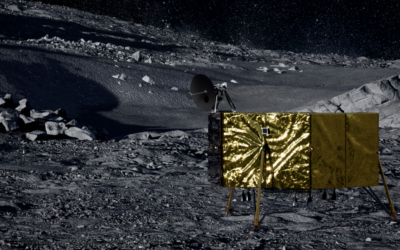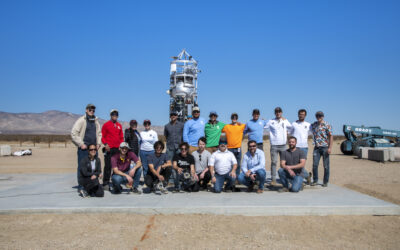Masten has been building and flying reusable rockets in the Mojave Desert for nearly two decades.
Our test flights help government, defense, and commercial customers validate technologies aboard our rockets and advance readiness for space. Not to toot our own horn, but we’ve had the most successful rocket-powered landings in the industry with over 600 flights across five reusable rockets. And we’ve tested some pretty important stuff…
We worked with Honeybee Robotics to validate their lunar sample vacuum on our Xodiac rocket. Now this payload is headed to the Moon in 2023. We also tested Draper’s navigation system on Xodiac. We validated their hazard detection technology on Earth to get it ready for a lunar landing. And remember the Perseverance mission to Mars? Our Xombie rocket tested JPL’s lander vision system for that mission too. These tests made it possible to land safely near the science and avoid a nearly two-year drive on the red planet.
In fact, we tested A LOT of other payloads and landing technologies along the way, so you could say we’re known for sticking the landing. We use our proprietary flight software and propulsion technologies to land within centimeters of the target landing site. These rocket innovations have allowed us to evolve into the space infrastructure company we are today. Now we’re applying our flight experience to missions to the Moon, Mars, and beyond.
Our end-to-end mission services include everything from payload integration and rocket testing to lunar delivery and surface operations. We partner with payload managers and researchers every step of the way. And we take on the heavy lifting when it comes to mission design and analysis, flight operations, and communications.
Fortunately, we have a lot of smart people leading the operations for our first mission to the Moon in 2023.
In a nutshell… our Xelene lunar lander will be put on a trans-lunar injection by a SpaceX launch vehicle. Then we’ll coast in space for a few days. Once we get closer to the Moon, we’ll fire up our 12 RCS thrusters and 6 main engines to enter lunar orbit. We’ll circle around the Moon several times to nail down our positioning and landing site at the lunar south pole. Then we’ll fire up our engines again to slow down and autonomously descend for a soft touchdown near the Haworth Crater.
We’ll maintain operations for at least 12 days, checking off quite an agenda. Our payloads will help assess the composition of the lunar surface, detect volatiles, and evaluate radiation in advance of human missions. This will be the first of many Masten mission to the Moon, Mars, and beyond.
The ultimate goal? Unlock the value in space to benefit humans on Earth. That means we’re not just flying rockets… we’re also not just landing on the Moon. We’re building the technologies that will enable sustainable access and utilization of our solar system.
These mission-enabling technologies are solving the most pressing challenges in space exploration. To give you a few examples…
Our rocket mining system will help extract and utilize extraterrestrial resources like water, methane, and rare-Earth metals. Our lunar PNT beacons will enable navigation and location tracking for spacecraft, assets, and future astronauts. Our instant landing pads will enable us to mitigate lunar dust and increase the number of landing sites on the Moon and Mars. And our larger landers, equipped with our metal oxidation warming system, will enable us to deliver heavier cargo and survive the lunar night.
Ultimately, we’re accelerating space ecosystems and opening the door to new innovations that will benefit the industry, economy, and environment right here on Earth.


